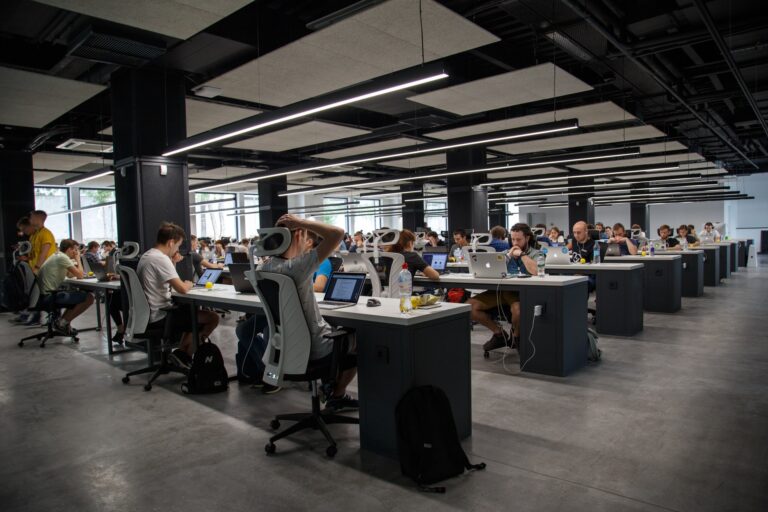As an organization, you rely on your employees to get daily tasks done. But beyond regular operations, your employees are also a major part of your organization’s ongoing success. Without the support and loyalty of your team, your organization is left struggling to manage high turnover rates, low employee morale, and dropping productivity.
An investment in your employees is an investment in the future of your organization. And the best way to ensure employee retention is to build an organizational culture that makes employees want to stick around.
Building a strategic plan for employee retention is a critical step toward a workplace culture with low turnover, high engagement, and high productivity. Your plan should include careful consideration of what employees want and need, and have actionable steps toward implementing those items.
What are some of the things you should consider in your employee retention plan?
Employee Engagement
Time and time again, employers have seen a clear link between employee engagement and retention. Less engaged employees tend to achieve less and leave sooner than their peers, costing organizations time and money. In fact, Quantum Workplace found in their 2020 employee engagement report that disengaged employees were 3.3 times more likely to leave a job after 90 days than highly engaged workers.
According to 2020 research by Gallup, disengaged employees cost companies as much as 18% of their annual salary. On the contrary, teams of highly engaged employees had 14% higher productivity than their less engaged peers. Clearly, disengagement has a real cost to your bottom line.
Building an engaged workforce starts at the leadership level. It is important that your employees have managers and leaders they know are invested in their success. A strong leader will get to know their employees and actively seek out opportunities to help them succeed. By treating your employees with respect and by taking an active role in their growth and development, you are far more likely to be rewarded with an engaged team of employees who want to stay with your organization.
Learning Opportunities
Employees appreciate opportunities to expand their skills and try new things. By building the time and support for learning into your organizational culture, you support your employees’ needs while building a more skilled workforce.
A great way to facilitate learning is to set aside dedicated time in the workday for employees to dedicate to their educational efforts. Time is widely considered one of the biggest barriers to continuous learning for employees. By blocking out a few hours a month to fully commit to learning, you demonstrate to your employees that you recognize their needs and value their efforts to advance their skills.
Continuous learning keeps your employees’ skills sharp and constantly evolving. As your organization adopts new technologies or processes, your employees will be prepared to take on new challenges. And when your employees are encouraged in their efforts to educate themselves, their motivation and productivity increases in tandem.
Ongoing Training
Effective training directly leads to employees that are confident in their abilities and can carry out their responsibilities with consistency and efficiency. The more you invest in ongoing training for your employees, the more they will feel empowered to make decisions and perform to their fullest potential.
Recent research by HR company go2hr has found that 40% of employees who have received insufficient training will leave their organization within the first year of employment. And truly effective training goes beyond the onboarding process. Most employees are asked to take on new responsibilities and continue to do more throughout their employment, meaning that the information required to do their job initially will become insufficient as their role evolves.
Training leads to increased employee motivation, engagement, and productivity. When employees are equipped with the necessary tools to do their job effectively, they are more likely to feel supported and prepared. And the more your employees feel that you are invested in their success, the more likely they are to remain with your organization.
Opportunities for Growth and Development
For many employees, staying with an employer that doesn’t provide them with a path for further growth and development can feel like a waste of valuable time. If you are looking to keep your employees around in the long term, it’s important that you make it clear in the short term that you can provide them with needed opportunities for growth.
Growth is so important, in fact, that LinkedIn’s 2018 Workforce Learning Report found that 93% of employees would choose to stay longer with an organization that invested in their career development. It is vital that any plan for employee retention acknowledges the writing on the wall and prioritizes providing employees with career development opportunities.
Career growth is beneficial not only for employees, but for organizations. Rather than investing in employees for a short period of time, only to lose them to a higher bidder, developing your
existing workforce and providing them with opportunities to grow from within provides a better return on your investment.
Employees who are encouraged with opportunities to grow and succeed with your organization are more likely to want to put in their best efforts. And when your employees see a future with your organization, they begin to view your success as their own.
Regular and Productive Feedback
Feedback should come more often than just once a year in performance reviews. When you withhold your input on employee performance until it’s time for annual reviews, you breed a culture of uncertainty and anxiety. When employees feel unsure about their role in the organization, they are more likely to seek out other opportunities.
Regular feedback, both positive and negative, can contribute to a more open and communicative workplace culture. By providing your employees with feedback on what they are doing well and where they could improve, they are able to proactively work toward bettering their performance.
Beyond providing instructions for improvement, feedback also provides an opportunity to recognize the hard work of your employees. According to a recent survey by HubSpot, 69% of employees reported that they would work harder if they felt more recognized for their efforts.
Clearly, regular feedback boosts employee morale and engagement, while providing your organization with better output and productivity. And when employees are supported, engaged, and encouraged, your retention rates will soar.
Employee Retention in 2022
As all industries face a growing labor shortage, your existing workforce is more valuable than ever before. Investing time and resources into supporting and developing your employees is the most effective way to ensure they want to remain with your organization.
When building a strategic plan for employee retention, it is important that you put yourself into your employees’ shoes. Your plan should center itself around their best interests, because when your employees are properly supported, they will achieve more and stay longer.
Employee retention is an important consideration in any organization. By providing growth opportunities, ongoing training and learning, and regular feedback, you will set your organization up for success with an engaged workforce that wants to stick with you.




